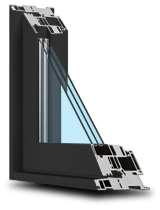Storm Doors vs. Screen Doors: What’s the Real Difference?
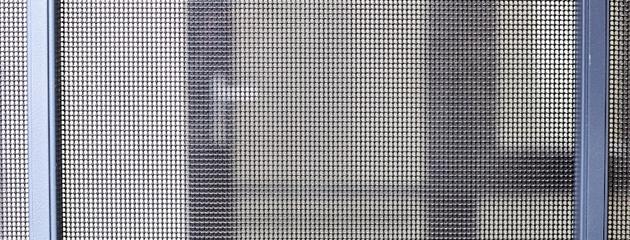
Key Takeaways
- Storm doors offer insulation and weather protection, typically featuring a solid outer layer and interchangeable glass/screen panels.
- Screen doors prioritize airflow and pest control, with lightweight frames and mesh inserts.
- Homeowners choose storm doors for energy efficiency, durability, and enhanced security.
- Material, design, and seasonal usability are key factors that distinguish the two.
What is a storm door, and how does it work?
During Canadian winters, cold drafts can penetrate even well-sealed doors. A storm door provides an extra layer of protection to address this issue. That’s precisely where storm doors come in. A storm door is a secondary, outer door installed in front of an exterior access door, designed to add an extra layer of protection against weather extremes.
Core Components of a Storm Door
Storm doors are built with insulation and weather resistance in mind. Here’s what they typically include:
- Main Frame – Usually made of aluminum, vinyl, wood, or steel.
- Glass Panels – These can be full-view or half-view, often interchangeable with screens for seasonal flexibility.
- Weatherstripping – A critical feature to prevent air and water infiltration.
- Closer and Latch System – Ensures smooth operation and security.
- Screen Inserts – Optional, for ventilation during warmer months.
How It Works
A storm door creates a buffer zone between the main door and the outdoor environment. This airspace helps reduce thermal transfer, which in winter prevents cold air from seeping in and in summer keeps cool air inside longer.
What’s the result?
- Energy savings, as your HVAC system doesn’t need to work overtime.
- Protection for the main door from rain, snow, wind, and sun damage.
- Improved home security, as many storm doors come with multi-point locking systems.
Specification Table: Common Storm Door Features
| Feature | Description |
|---|---|
| Frame Material | Aluminum, wood, vinyl, composite |
| Glass Type | Tempered, low-E, full-view, half-view |
| Insulation | Weatherstripping and thermal breaks |
| Security Features | Deadbolt, 3-point locks, reinforced hinges |
| Ventilation Options | Removable/integrated screen inserts |
| Finish Options | Powder-coated, woodgrain, or paintable |
"Storm doors aren’t just about winter weather — they enhance your door’s life expectancy and increase energy efficiency year-round."
— Helen Sin, Consumer Success Manager, Canadian Choice Windows & Doors
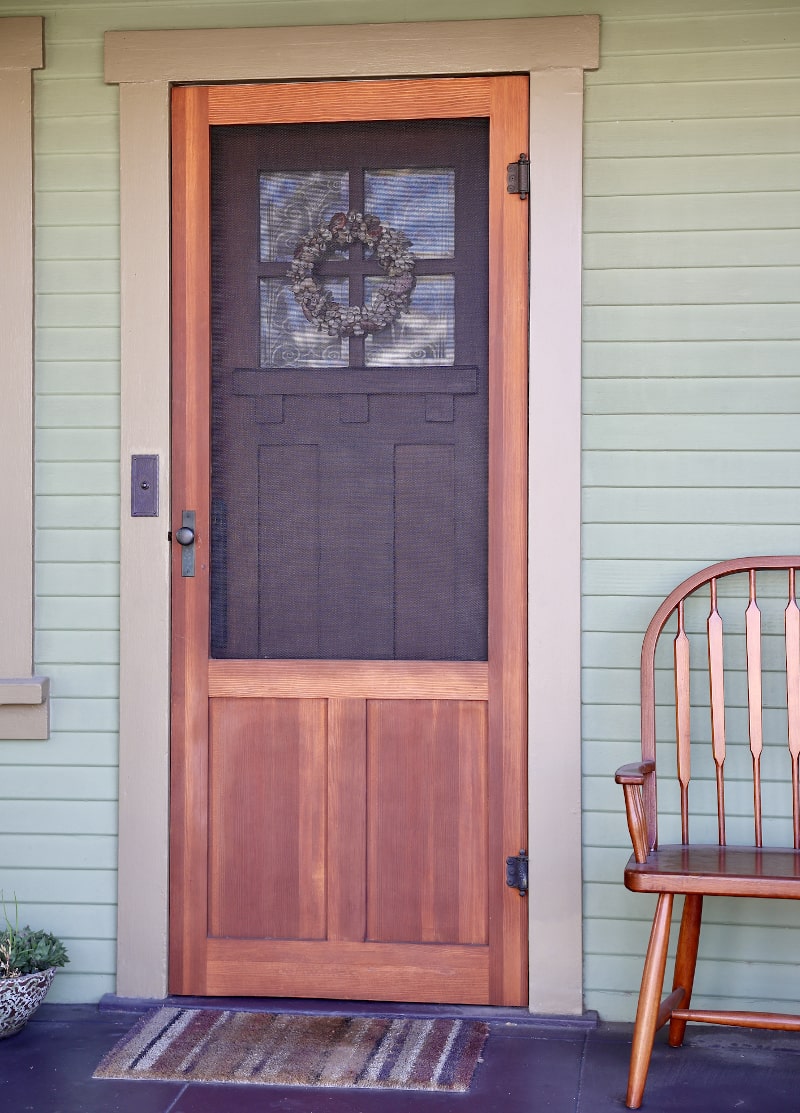
How does a screen door differ from a storm door?
Homeowners often encounter both screen and storm doors, but their functions and construction differ significantly.
Let’s break it down.
Purpose and Function
- Screen Doors : Designed primarily for ventilation and pest control. These are ideal for summer months when airflow is crucial but bugs are unwelcome guests.
- Storm Doors : Built for weather defence, providing insulation, security, and structural protection.
Structural Differences
| Feature | Screen Door | Storm Door |
|---|---|---|
| Frame Material | Lightweight aluminum or wood | Heavier aluminum, steel, or composite |
| Main Insert | Mesh screen (nylon or metal) | Glass panel, often removable |
| Purpose | Ventilation & insect barrier | Weather resistance & insulation |
| Seasonal Use | Primarily warm months | Year-round functionality |
| Security Level | Minimal | Moderate to High |
Material & Design
- Mesh Types: Screen doors utilize mesh made from fibreglass for flexibility, aluminum for durability, or stainless steel for high-traffic areas.
- Glass Panels: Storm doors feature tempered or low-E glass that can withstand extreme temperatures and high forces.
- Customization: Storm doors offer a wider range of design options, from full-view glass to decorative grills, due to their visibility and front-facing nature.
Why would a homeowner choose a storm door?
In Canada’s climate — with heavy winds, snow, and fluctuating temperatures — a storm door provides practical benefits in comfort, protection, and efficiency. That enhances your home’s comfort, protection, and efficiency.
1. Energy Efficiency
Storm doors improve your home’s envelope, reducing the strain on heating and cooling systems:
- Acts as insulation – Blocks drafts and traps a layer of air as a thermal barrier.
- Low-E glass – Reflects heat into the home in winter and keeps UV rays out in summer.
- Cost savings – Homeowners can save 5-10% on annual energy bills, depending on the quality of their main door and climate conditions.
2. Weather Protection
This is especially relevant in areas such as Ontario or Alberta, where severe weather can cause damage to exterior doors. Storm doors act as:
- Shields against ice and hail
- Barriers against driving rain and snow
- Protectors from sun bleaching on the main doors
3. Security Enhancement
Modern storm doors offer:
- Three-point locking systems
- Shatter-resistant glass
- Reinforced aluminum frames
These additions make break-ins more difficult, deterring opportunistic intruders.
4. Aesthetic and Practical Benefits
- Storm doors can be styled with full-view glass or decorative grills, enhancing curb appeal.
- They allow natural light to enter even when the main door is shut.
- Add ventilation during spring/summer with built-in screens.
What are the different types of screen doors available today?
Across Canadian neighbourhoods, homeowners use a wide range of screen door types, each serving specific needs. While they all aim to improve airflow and keep pests out, not all screen doors serve the same function or fit the same lifestyle.
1. Sliding Screen Doors
Best suited for: Patio doors or large glass doors
How they work: These doors glide along a track and are typically mounted on patio sliding doors. They're ideal for homes with a backyard deck or garden access.
Pros:
- Easy operation
- Large opening for ventilation
- Ideal for wide entryways
Cons:
- Tracks can accumulate debris
- Less effective in tight front-entry spaces
2. Retractable Screen Doors
Best suited for: Front doors and French doors
How they work: These screens retract into a side casing when not in use. They're nearly invisible when retracted and can be pulled out for use during warm months.
Pros:
- Clean appearance
- Seasonal flexibility
- Minimal space requirement
Cons:
- More expensive than standard screen doors
- The mechanism may wear with frequent use.
File:
sliding-screen-door.jpg
Alt:
Sliding screen door on a modern patio entrance
Title:
Sliding Screen Door on Patio
3. Hinged (Traditional) Screen Doors
Best suited for: Most standard exterior doors
How they work: These swing open like a regular door and are often used in front or back entryways.
Pros:
- Simple to install and replace
- Affordable
- Classic look
Cons:
- May slam shut in the wind
- The mesh may sag over time.
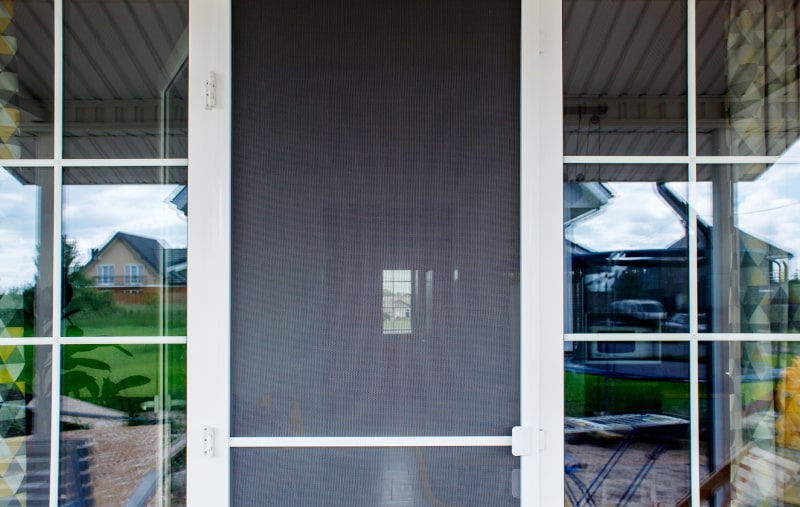
4. Security Screen Doors
Best suited for: High-crime areas or homes needing extra protection
How they work: These doors incorporate a sturdy metal frame and reinforced mesh or grille, often with deadbolt locks.
Pros:
- Enhances home security
- Allows airflow with peace of mind
- Durable construction
Cons:
- Costlier
- Heavier and may require professional installation
Topic-Specific Comparison Table
| Type | Best Use | Pros | Cons |
|---|---|---|---|
| Sliding | Patio doors | Large airflow, easy to use | Track maintenance, not for all doors |
| Retractable | Front/French doors | Hidden when not in use, sleek | Expensive, moving parts may degrade |
| Hinged | Back/front doors | Classic, affordable, easy install | Can slam, mesh may sag |
| Security | High-security needs | Strong frame, locks, durable | Heavy, more expensive |
How do storm doors impact home insulation and energy savings?
Walk into any Canadian home mid-winter, and you’ll feel the difference a properly sealed entry makes. Storm doors aren't just barriers — they're insulation tools. So, what is the actual impact of these factors on energy efficiency?
R-Values and Insulating Effect
In building science, R-value measures how well a barrier resists heat flow. The higher the R-value, the better the insulation.
- Standard exterior doors typically have an R-value ranging from 2 to 5, depending on the material used.
- Storm doors, especially those with low-E glass and thermal breaks, can add up to R-2 to the existing door setup.
While the increase may seem modest, in cold Canadian climates, even small gains in R-value result in noticeable energy savings.
Sealing Mechanisms That Matter
Not all storm doors are created equal. Here’s what contributes most to their insulation performance:
- Weatherstripping: High-quality rubber or foam seals reduce drafts and eliminate air gaps, thereby enhancing energy efficiency.
- Adjustable sweeps: Bottom edge seals that reduce airflow under the door.
- Glass Type: Low-E (low-emissivity) coatings help reflect radiant heat into the home.
- Thermal breaks: Prevent heat from conducting through metal frames by using insulating material layers.
Winter Performance: Real Gains
In cities like Toronto or Winnipeg, where winter temperatures dip well below freezing, storm doors do double duty:
- Prevent warm air loss from the main doors being frequently opened.
- Trap solar heat in south-facing entries.
- Protect the seals on your main entry door to reduce long-term wear.
What materials are best for long-lasting screen doors?
If you’re investing in a screen door, durability matters just as much as airflow. Over time, climate, usage, and even pets can take a toll on the material of screen doors. So, which options give you the best return?
1. Aluminum
- Durability : High. Aluminum is rust-resistant and withstands Canadian winters.
- Maintenance : Low. A quick wipe-down is usually enough.
- Aesthetic : Available in powder-coated finishes and modern styles.
- Cost : Moderate
Pros:
- Lightweight and sturdy
- Doesn't warp
- Custom finish options
Cons:
- Can dent with impact
- Not ideal for coastal salt-air exposure without anodizing
2. Vinyl (PVC)
- Durability : Moderate. Doesn’t rust but can fade or crack over time.
- Maintenance : Low to moderate.
- Aesthetic : Limited colours and finish options.
- Cost : Affordable
Pros:
- Budget-friendly
- Moisture-resistant
Cons:
- Less structurally sound
- Can become brittle in extreme cold
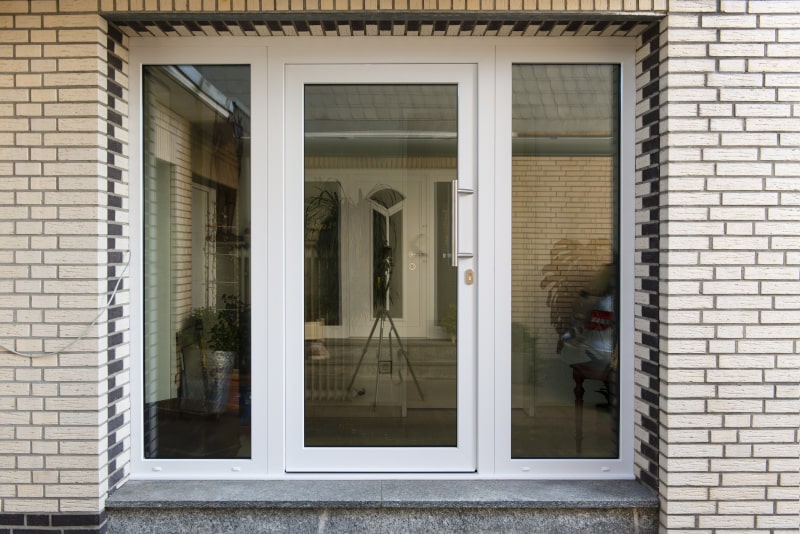
3. Wood
- Durability : Varies depending on the type of wood and finish.
- Maintenance : High. Requires sealing, staining, or painting.
- Aesthetic : Excellent. Classic and warm appearance.
- Cost : Can range from moderate to expensive
Pros:
- Natural look that complements traditional homes
- Can be custom-built
Cons:
- Susceptible to warping, rot, and termites if not maintained
- Higher upkeep
Specification Table
| Material | Durability | Maintenance | Appearance | Best Use Case |
|---|---|---|---|---|
| Aluminum | High | Low | Modern, customizable | Most climates, long-lasting |
| Vinyl | Medium | Low | Simple, limited styles | Humid or budget-conscious homes |
| Wood | Medium | High | Classic, customizable | Heritage or character homes |
How to choose between a storm door and a screen door for your home?
Choosing between a storm door and a screen door isn’t just a seasonal decision — it’s a strategic choice based on function, location, and lifestyle. Here’s a straightforward step-by-step to help you decide.
Step 1: Assess Your Climate
- Cold Winters? You’ll benefit from the insulation of a storm door.
- Warm or humid summers? Opt for a screen door to maximize airflow.
Step 2: Consider Your Entry Usage
- Front Door with High Visibility? A decorative storm door may enhance curb appeal.
- Back Door or Deck? A sliding or retractable screen door is often more practical.
Step 3: Evaluate Your Budget
- Storm doors generally cost more due to materials and installation.
- Screen doors are more budget-friendly but offer less insulation and security.
Step 4: Think About Security
- Need protection? Look into security screen doors or storm doors with multi-point locks.
- Low-crime area? A basic screen door may suffice.
Step 5: Match Your Aesthetic
- Modern homes look great with full-glass storm doors.
- Cottage-style homes benefit from wood-framed screen doors.
Step-by-Step Decision Table
| Criteria | Choose Storm Door | Choose Screen Door |
|---|---|---|
| Insulation Needed | Yes | No |
| High Airflow Needed | No | Yes |
| Budget Constraints | Higher cost acceptable | Lower cost preferred |
| Security Important | Yes (multi-lock systems available) | No or minimal |
| Aesthetic Priority | Full-view or decorative glass | Subtle, retractable, or wooden look |
How do pricing and installation compare for storm vs. screen doors?
Let’s talk numbers. While both storm and screen doors can improve home function and comfort, their costs — both initial and long-term — vary significantly. From purchase price to installation labour and long-term value, here’s how the two stack up.
Purchase Costs
| Type of Door | Price Range (CAD) | Notes |
|---|---|---|
| Basic Screen Door | $100 – $300 | Usually DIY-installable |
| Retractable Screen | $300 – $700+ | Higher due to the mechanism |
| Storm Door | $400 – $1,200+ | Depends on material & features |
| Security Storm | $800 – $2,000+ | Premium locking and reinforced glass |
Long-Term Value
Storm Doors:
- Lasts 15–25 years with proper care
- Helps reduce HVAC use, contributing to energy savings
- Boosts security and weather resistance
Screen Doors:
- Lasts 5–15 years, depending on the material
- Adds comfort and ventilation
- Less impact on energy bills

Are there eco-friendly options for storm or screen doors?
Absolutely — and it’s not just about energy savings. Many modern door manufacturers are incorporating sustainability into both materials and production practices. Here’s what to look for if environmental impact is part of your buying decision.
Sustainable Materials
- Aluminum : Often made from recycled content and is fully recyclable at the end of life.
- Wood : Choose FSC-certified wood for sustainable forestry.
- Vinyl (PVC) : Lower sustainability unless made with recycled materials.
- Fibreglass (for storm doors) : Long-lasting and low-maintenance, but not biodegradable.
Look for brands that use powder-coated finishes, which are low-VOC and emit fewer pollutants than liquid paints.
Energy Performance
- Low-E Glass: Reflects heat and UV rays, reducing energy consumption for heating and cooling.
- Tight Weatherstripping: Minimizes air leakage.
- Dual or triple panes: Available on premium storm doors for maximum insulation.
Certifications to Consider
- Energy Star®: Certifies doors that meet energy efficiency standards in Canada.
- Forest Stewardship Council (FSC): Ensures wood products are sourced responsibly.
- GREENGUARD®: Verifies low chemical emissions from coatings and finishes.
Which is ultimately better: storm door or screen door?
There’s no universal answer — only what works best for your home. That said, here’s a summary of what we’ve explored so far.
Summary Table
| Feature/Need | Best Option | Why |
|---|---|---|
| Cold Climate | Storm Door | Better insulation, R-value |
| Ventilation | Screen Door | Allows airflow without energy trade-off |
| Budget-Friendly | Screen Door | Lower initial and installation cost |
| All-Season Use | Storm Door | Protects in winter, ventilates in summer |
| Security | Storm Door | Locks, reinforced glass |
| Aesthetic Flexibility | Tie | Both offer decorative options |
| Eco-Friendly Options | Tie | Both have sustainable materials available |
1000’s of Colours & Textured Finishes
Transform your home from ordinary to extraordinary with our new coloured and non-glare textured finishes. Available in a wide array of colours as well as custom matched colours for your very own personalized design.
Our Most Popular Replacement Window Colours:






